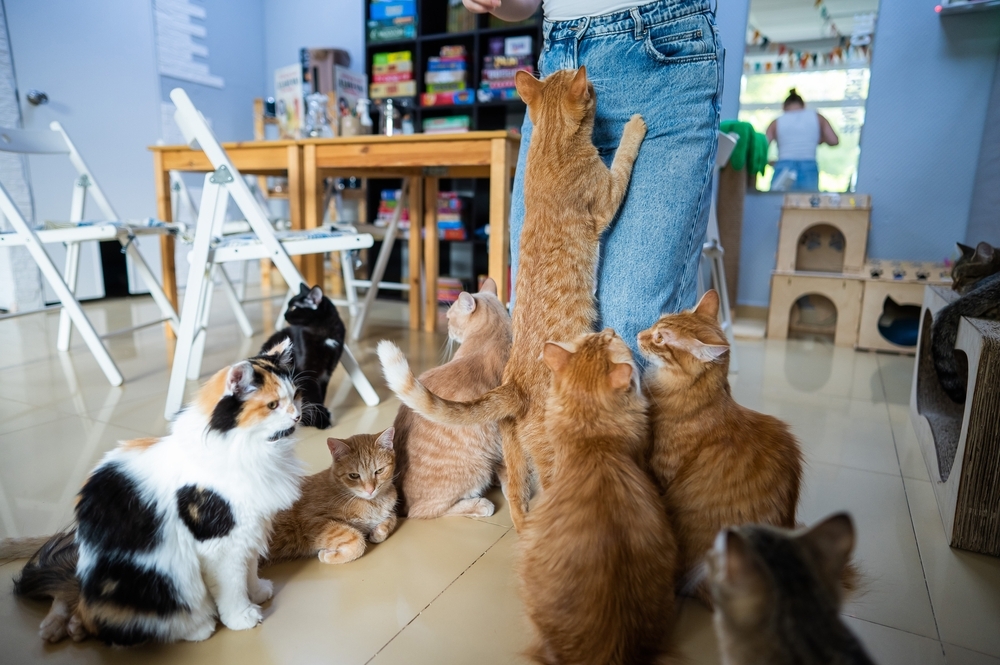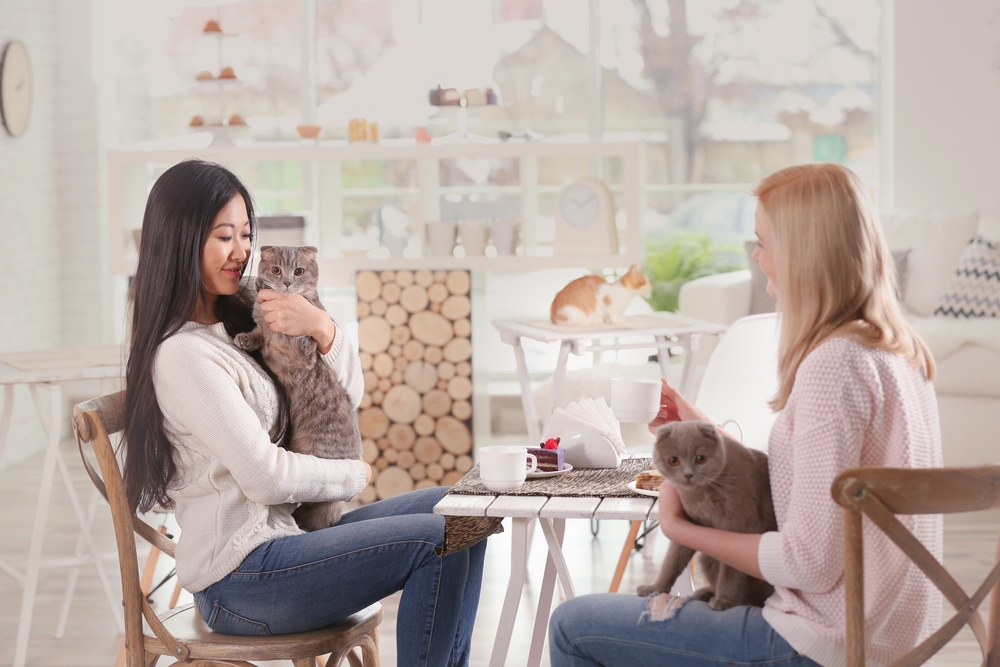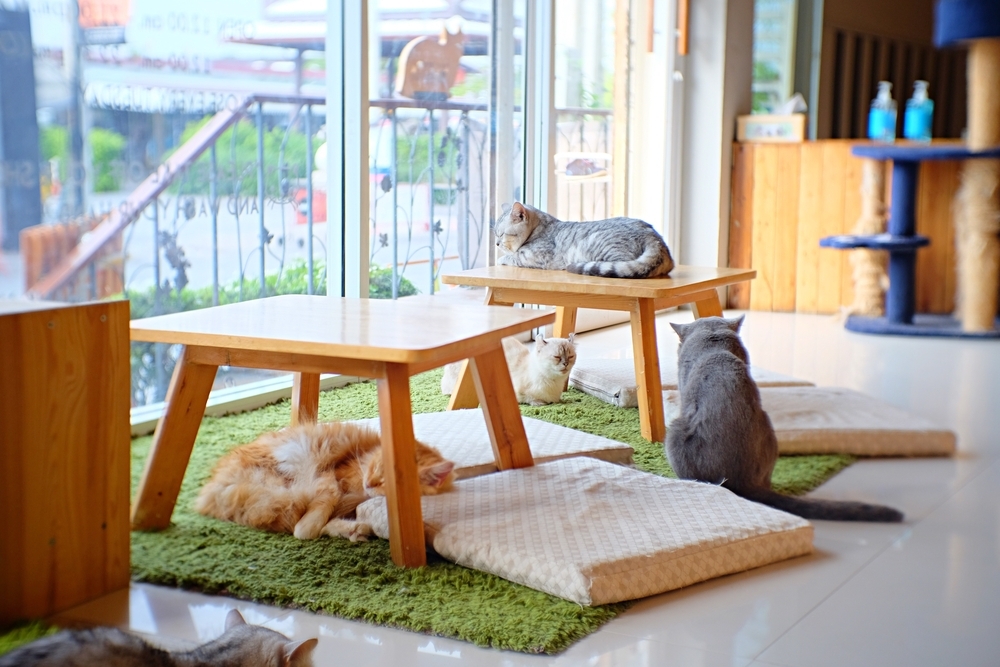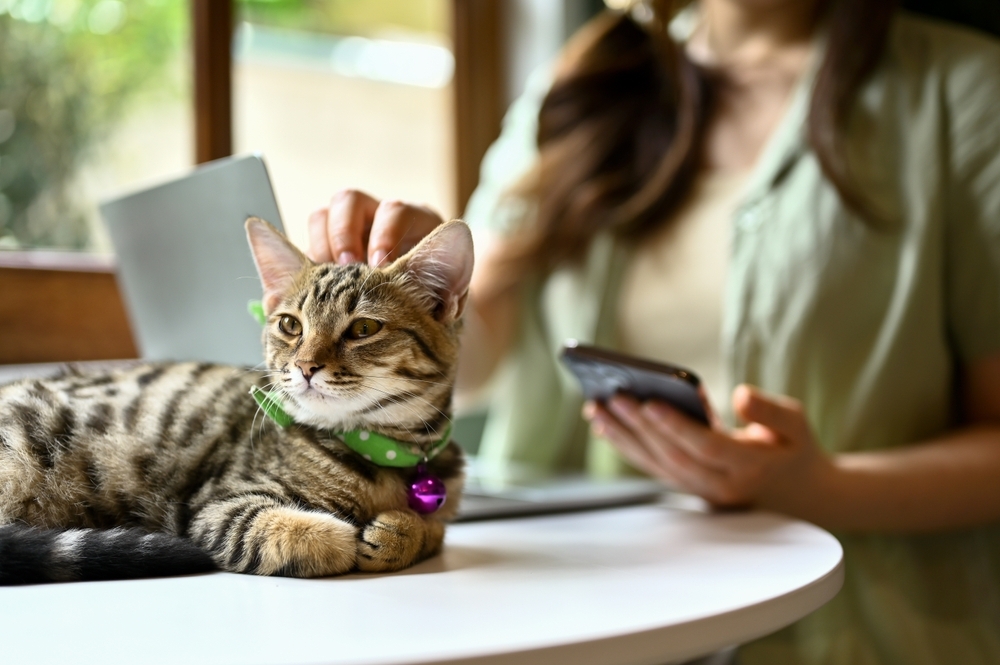Purr-fectly Clean: How Do Cat Cafes Pass Health Inspections?
By Hamza Benhlima · 13. March 2024
How do cat cafes pass health inspections?
It’s about striking a balance between rigorous cleanliness, food safety, and ensuring the cats😻 are healthy and happy.
We’ll explore the specific steps cat cafes take to create a welcoming space for cat enthusiasts that also meets the stringent expectations of health inspectors—without skimping on the cuddles or quality cafe experiences.
Key Takeaways
- Cat cafes meticulously maintain areas where food is prepared, ensuring that they meet health inspection standards and are free from any cat hair.
- The well-being of the cats is a top priority in cat cafes, and they go to great lengths to ensure that the cats are healthy and content, which in turn keeps the environment safe for guests.
- Cat cafes operate with complete transparency, consistently demonstrating to customers and health inspectors that they adhere to the highest standards of cleanliness and regulatory compliance.
Ensuring a Healthy Environment for Cats and Customers
 cats in cafe
cats in cafe
Running a cat cafe involves more than just brewing good coffee or hosting cute cats.
It’s about consistently meeting high cleanliness standards and making sure the cats are comfortable in their environment.
This means regularly cleaning the litter boxes and keeping the areas where food is prepared away from the cats.
A cat cafe has to pass health inspections just like any other food establishment, but with additional steps due to the presence of cats.
So what’s the secret to their success? It boils down to following health regulations, smart cafe design, and strict cleaning routines.
Let’s take a closer look at how they do it.
Adhering to Health Codes and Regulations
A cat cafe isn’t just a quirky business; it’s a specialised venue that has to follow health department rules made for places with animals.
This means they need enough space to satisfy zoning laws.
Health codes require cat cafes to have strict rules to keep cats out of the food prep and storage areas.
This might sound tough, but it’s key to running a cat cafe that’s both fun and safe. After all, customers aren’t looking for a fur garnish with their latte!
Designing Cat-Friendly and Hygienic Layouts
Establishing a cat cafe that passes health inspections is an art. Cat cafes employ design strategies that separate spaces for cat interaction from areas allocated for food and drink preparation and consumption.
This is where physical barriers like gates or doors and a glass wall come into play, ensuring that cats cannot access areas where food is handled.
Of course, these cat cafés don’t compromise feline welfare in their pursuit of hygiene.
Cat cafes also prioritise the comfort and enrichment of the cats in the design of their spaces.
Some features you may find in a cat cafe include:
- Shelves
- Tunnels
- Hidey-holes
- Quiet private areas
- Safe high perches
These establishments, including your own cat cafe, ensure a pleasant and safe atmosphere for both the cats and customers.
Implementing Rigorous Cleaning Protocols
Keeping a cat cafe clean is a never-ending task, but it’s one that’s taken very seriously.
A crucial part of cleaning protocols is ensuring proper ventilation and regular use of HEPA air purifiers to manage fur and maintain fresh air circulation.
In addition to this, daily cleaning routines include the sterilisation of counters and other surfaces to prevent bacteria spread.
Strict procedures are in place to prevent domestic animals from accessing food preparation areas.
Keeping Feline Residents Healthy and Happy
 women resting cat cafe
women resting cat cafe
Maintaining a clean environment is just one piece of the puzzle. Ensuring the health and happiness of the feline residents is as important.
Cats are the stars of the show, after all!
From regular veterinary care and vaccinations to stress-free living conditions, cat cafes go above and beyond to keep their furry residents healthy and happy, providing cats protection in a unique setting.
The admission fees you pay are not just for your coffee and cat cuddle time. These funds help cover essential business expenses such as veterinary bills, as well as food and litter for the cats.
Regular Veterinary Care and Vaccinations
The resident rescue cats at cat cafes aren’t just pampered with love and attention; they also receive top-notch medical care. This includes:
- Weekly vet visits to monitor and assess their health
- Keeping all cats up to date with vaccinations
- Providing preventive flea and worm treatments
- Neutering as part of their health maintenance programs
Regular veterinary oversight is a critical aspect of maintaining a cat cafe.
It ensures that the cats are not only healthy and well-cared for, but also that they are not carriers of diseases that could be transmitted to humans.
Visitors can relax and enjoy their time with the cats, knowing that the health and safety of both the feline residents and the guests are taken seriously.
Stress-Free Living Conditions for Cats
 cats in a cafe
cats in a cafe
Creating as stable an environment as possible for cats is essential in a cat cafe setting. This includes providing stress-reducing features such as:
- Shelves
- Tunnels
- Hidey-holes
- Quiet private areas
- Safe high perches for cats to perch and retreat, offering them a sense of security.
But it’s not all about the physical environment. Cat cafes manage stress levels in cats by limiting visitor numbers, providing downtime between sessions, and employing a rotating staff schedule.
This minimises changes in the cafe’s social environment, ensuring that the feline residents can live a stress-free life.
Meeting Customer Safety Standards
 cat cafes
cat cafes
Meeting customer safety standards is crucial in any business, including cat cafes.
By implementing food safety practices and educating both staff and customers, cat cafes work to ensure a clean, safe, and enjoyable environment for everyone.
In addition to the unique experience of interacting with cats, successful cat cafes also focus on:
- Providing a variety of cats for patrons to meet
- Offering comfortable seating arrangements
- Decorating the space to enhance the customer experience
- Maintaining a high level of cleanliness throughout the cafe
These efforts are essential in maintaining customer satisfaction and encouraging repeat visits.
Food Safety Practices
Food safety is a top priority in cat cafes. They follow strict food handling rules that include comprehensive hygiene and cleaning practices.
To keep up with health regulations, many cafes choose to source ready-made food🥘 from outside vendors.
The staff at cat cafes are trained to make sure that those who work with food do not interact with the cats, preventing any risk of cross-contamination.
After customers leave, tables and surfaces are thoroughly cleaned, ensuring the same level of cleanliness you’d expect at any cafe or restaurant.
So, even if a cat just hopped off your table, rest assured that the area has been cleaned for your safety and peace of mind.
Educating Staff and Patrons
Education is an integral component in maintaining a well-ordered environment in cat cafes.
The staff is thoroughly trained and certified to handle food safely and to interact appropriately with the cats.
Customers are also informed about the cafe’s guidelines when they visit.
These include:
- Not bringing in outside pets
- Asking for permission before picking up any cats
- Avoiding feeding the cats with food meant for humans
- Keeping noise levels down and avoiding sudden movements
- Refraining from using flash photography
Additionally, some cafes use a reservation system to manage the number of guests, which helps prevent overcrowding and ensures a more enjoyable experience for both the cats and the patrons.
Navigating Legal Requirements
Operating a cat cafe involves more than simply offering refreshments and a space for cats to mingle.
It requires careful navigation through a complex array of legal requirements, which include securing the appropriate permits and licences, as well as addressing insurance and liability considerations.
Cat cafes must acquire a business licence📑, a health permit, and in certain cases, a zoning permit to operate legally.
They must also adhere to federal regulations concerning the handling, sale, and processing of food.
Additionally, cat cafes are subject to state taxes, including sales tax and franchise taxes, and must obtain a Certificate of Occupancy, which verifies their compliance with all relevant building codes, zoning laws, and government regulations.
Securing Necessary Permits and Licences
Running a cat cafe isn’t all about fun and games. It involves serious business considerations, such as securing a business licence, a health permit, and possibly a zoning permit, depending on the location.
The health permit is tailored to the special circumstances of a cat cafe, where food service and animal contact occur together.
Cat cafes must work with local health departments and other municipal authorities to ensure they obtain all the necessary permits and licences to comply with local regulations.
Building Trust Through Transparency
One of the key factors in the success of any business, including cat cafes, is establishing customer trust through transparency.
This includes clear communication with regulatory bodies, active involvement in the local community, and maintaining a transparent business bank account to show their commitment to health and safety standards.
Cat cafes often make their health inspection results and cleaning protocols available to the public.
This level of openness helps foster a good relationship with regulatory authorities, potentially leading to a more straightforward inspection process.
Open Communication with Authorities
Open communication within a cat cafe ensures that all staff members are aware of the business objectives, their roles, and how they impact the cafe’s success.
This not only supports existing processes but also promotes innovation, leading to suggestions for improvements that ensure cat cafes consistently pass health inspections.
Moreover, a work environment where open communication is emphasised leads to motivated staff who interact more positively with health inspectors.
This can impact the outcomes of health inspections favourably, making it a win-win situation for the cafe, the cats, and the customers.
Engaging with the Community
Engaging with the community is another aspect of building trust.
This includes using social media to demonstrate their commitment to maintaining high standards of hygiene and health.
Sharing health inspection information on these platforms allows for real-time updates and wider dissemination, which can result in improved public trust and customer loyalty.
Collaborating with animal shelters and animal control can also bring a sense of pride and fulfilment to pet businesses.
This not only reinforces positive brand values but also appeals to conscious consumers who prioritise brands involved in pet welfare.
Summary
We’ve taken a look at what goes on behind the scenes at cat cafes, where the focus is on keeping things clean and safe for everyone.
They work hard to make sure both the cats and customers have a healthy space, the cats are well-cared for, and that the cafe meets all safety and legal standards.
Cat cafes are all about offering a great experience while making sure that every detail meets the highest standards.
Frequently Asked Questions
Are cat cafes regulated?
Yes, cat cafes need to be properly regulated, as they currently only need to meet food safety requirements and set their own animal welfare standards, which can vary.
What happens to cats in cat cafes?
Cats in a cat cafe live freely, roaming the place just like they would at home. They are not allowed in any food areas and have their own beds, but often end up snoozing in unexpected spots.
What can you not do at a cat cafe?
At a cat cafe, remember to treat the fluffy residents with respect by not moving them from their cosy spots and by not carrying hot drinks around to prevent any mishaps.
Are cats in cat cafes vaccinated?
Yes, cats in cat cafes are vaccinated, so you can enjoy your time with them without worrying about their health.

